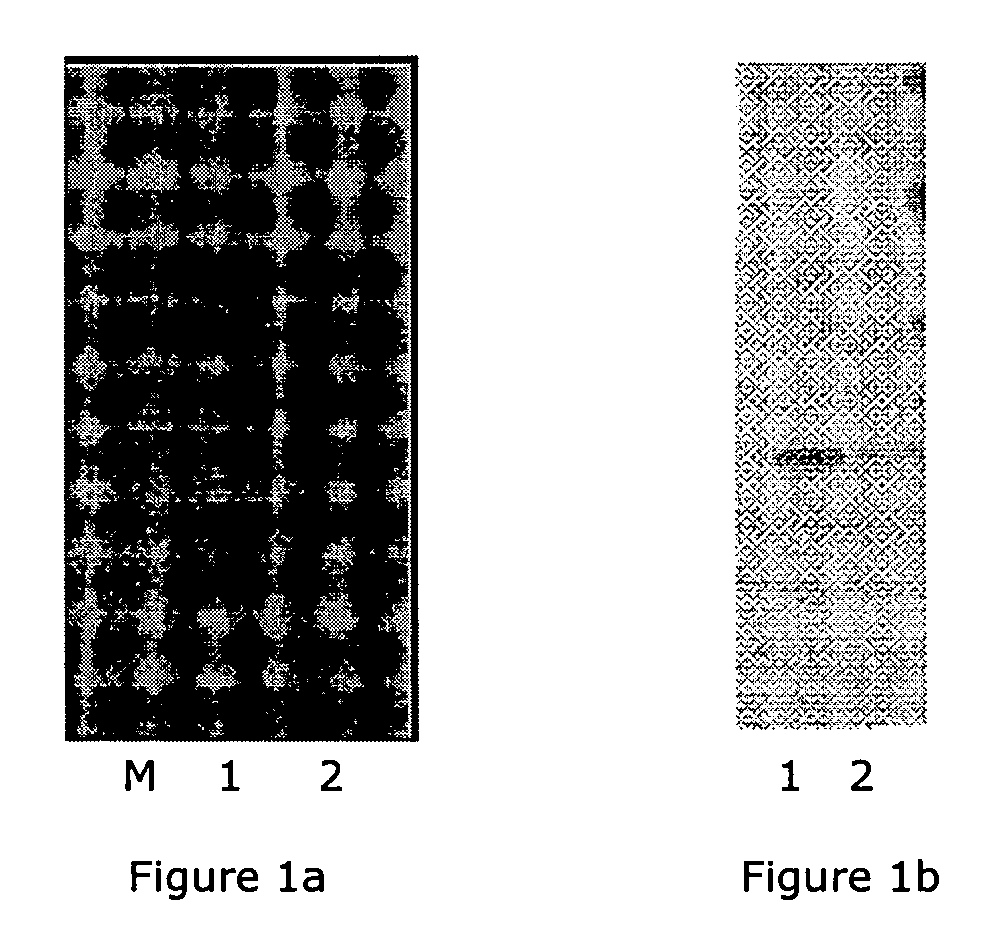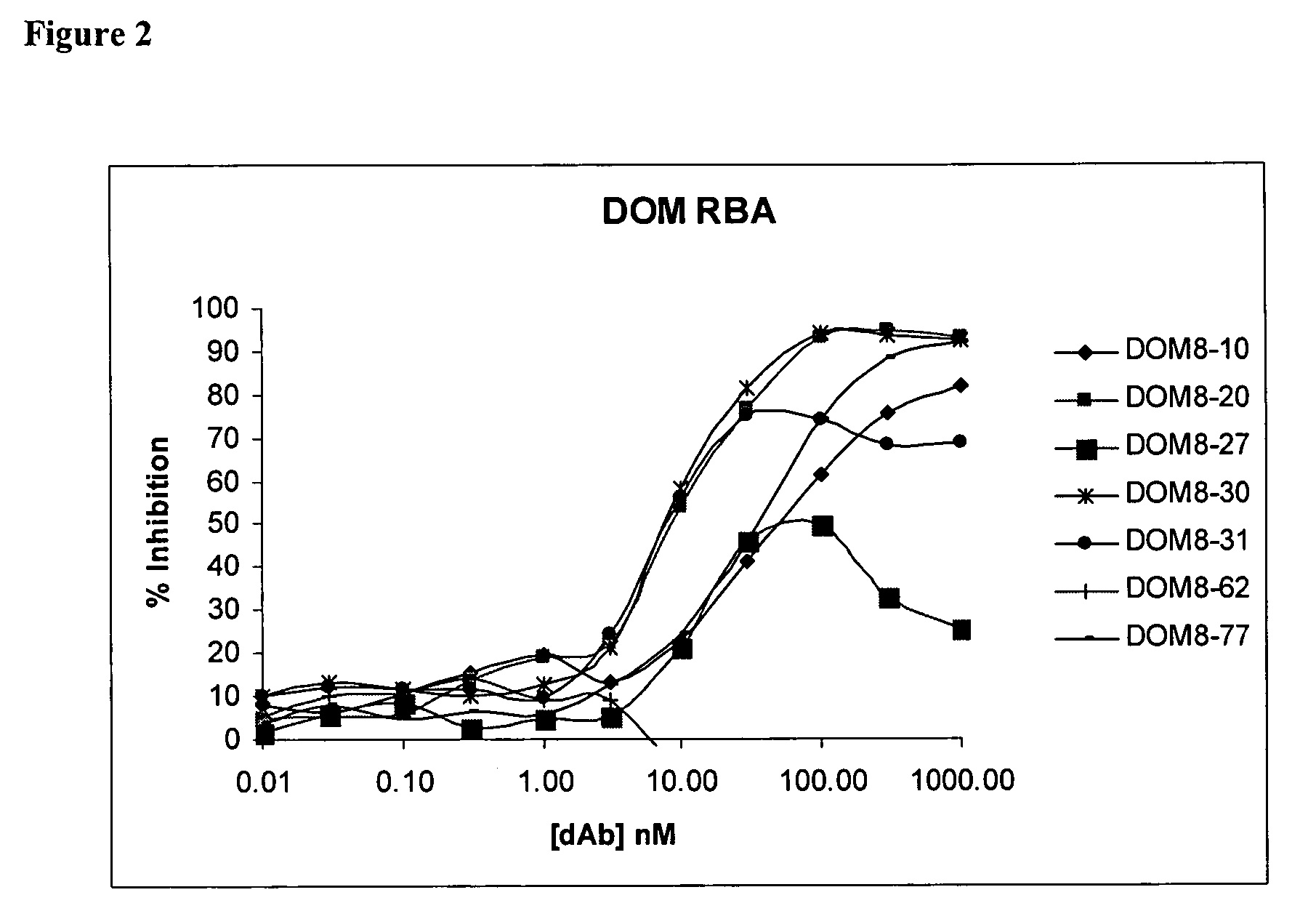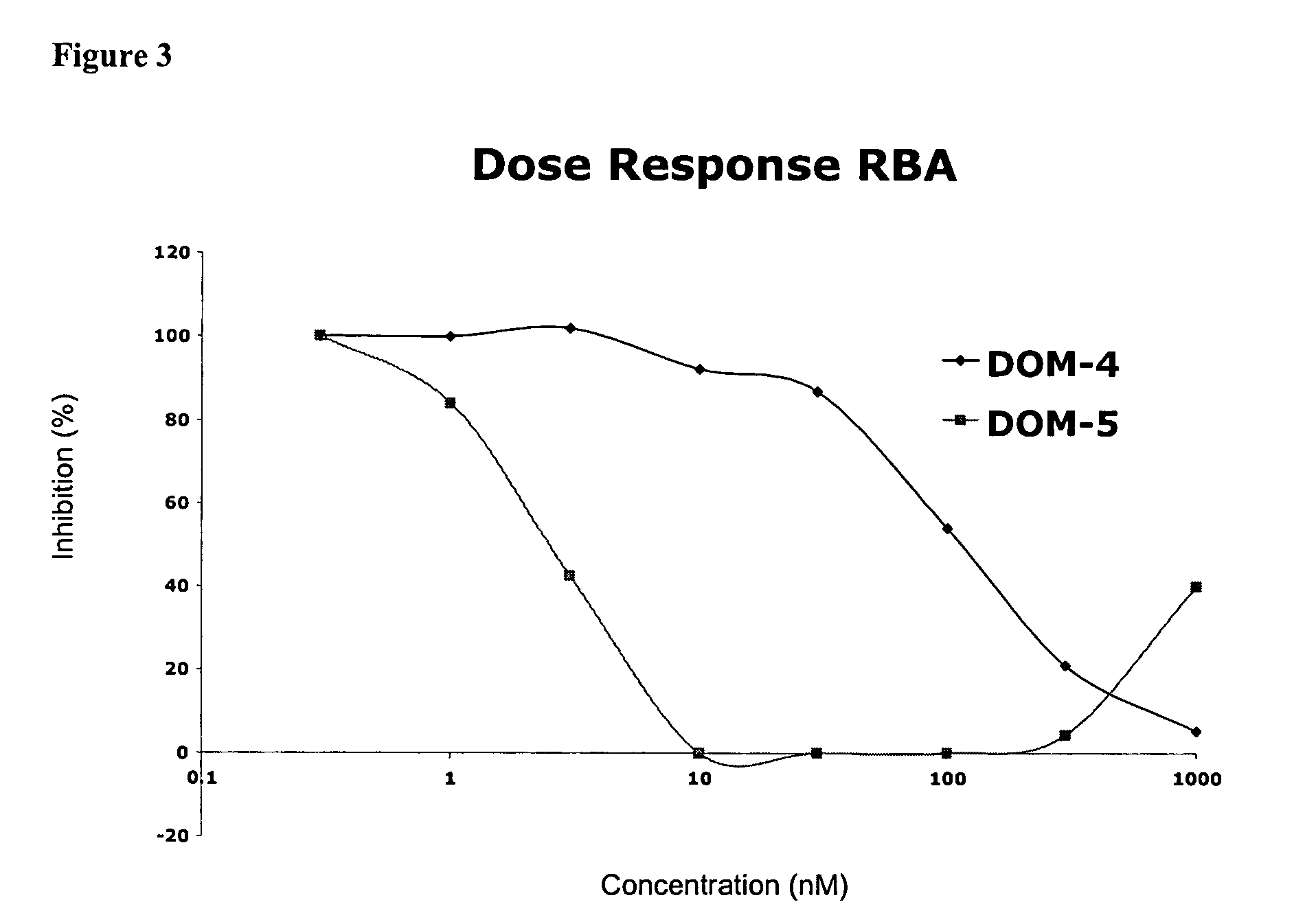Monovalent anti-CD40L antibody polypeptides and compositions thereof
a monovalent, anti-cd40l technology, applied in the field of monovalent anti-cd40l antibody polypeptides and, can solve the problems of inability to differentiate b cells, inability to efficiently signal cd40, and inability to achieve b cell differentiation, so as to avoid induction of platelet aggregation and facilitate the formation of divalent antibodies
- Summary
- Abstract
- Description
- Claims
- Application Information
AI Technical Summary
Benefits of technology
Problems solved by technology
Method used
Image
Examples
example 1
Biotinylation of Recombinant CD40L
[0283]Recombinant human soluble CD40L (PeproTech) was biotinylated and used during phage selections. Reagents, equipment and sources from which they are available are provided in Table 1.
[0284]Biotinylation of CD40L was performed by incubating CD40L (0.5 mg / ml) with EZ-Link™ Sulfo-NHS-LC-Biotin [Sulfosuccinimidyl-6-(biotinamido)hexanoate] (Pierce) at a molar ratio of 5:1 on ice for 2 hours according to the product instructions. The biotinylation reaction mixture was then dialysed against 3 exchanges of PBS (1000× sample volume) in a Slide-A-Lyzer® Dialysis Cassette at 4° C. to remove the unincorporated biotinylation reagent.
[0285]The biotinylated-CD40L was tested by receptor binding assay for binding to CD40 / Fc to confirm its biological activity. Quality of biotin-CD40L was also monitored by analysing on a NuPaGE 4-12% Bis-Tris gel and detected by Simply Blue Safe-Stain (Invitrogen) (FIG. 1a), and western-blotting by probing with Streptavidin-HRP (F...
example 2
Phage Selections Using Biotinylated Antigen
[0287]The Domain Antibody (dAb) libraries are based on a single human framework for the VH (DP47 and JH4b) and for the VK (DPK9 and JK1) with side chain diversity incorporated at positions in the antigen binding site that make contact with antigen in known molecular structures and mirror residues diversified in the human antibody repertoire. The antibodies are displayed as fusion proteins covalently linked to the N-terminus of the Fd-phage protein pIII, using the phage vector pDOM4 (Fd-Tet) with encodes the Fd phage genome with dAb expression under the control of the gene-III promoter. The dAb cassette consists of (5′ to 3′): eukaryotic leader sequence, dAb, myc tag, gIII. The vector contains both the M13 and colE1 origins of replication and is selectable using tetracycline. The VH and Vκ libraries each have a calculated size of over 1×1010 molecules. Reagents, equipment and sources from which they are available are provided in Table 2.
[028...
example 3
Cloning Enriched Phage Selection Outputs into the Soluble dAb Expression Vector pDOM5
[0299]Following the second and third rounds of selection, E. coli cells infected with the enriched dAb displaying fd-phage populations were obtained. An aliquot of these cells was used to prepare phage DNA and the enriched V-genes excised by digestion using the restriction endonucleases, SalI and NotI. The purified V-genes were ligated into the corresponding sites of pDOM5 (expression vector derived from pUC119 with LacZ promoter, eukaryotic leader, dAb cloning site, myc tag), and the ligated DNA used to electro-transform E. coli HB2151 cells which were grown overnight on agar plates containing the antibiotic carbenicillin. The resulting colonies were induced to express dAb protein either as 200 μl microcultures or 50 ml cultures. The resulting dAb was analysed for inhibitory activity using the CD40L receptor binding assay.
[0300]Following selection of phage, pDOM4 DNA was purified from the cell pell...
PUM
| Property | Measurement | Unit |
|---|---|---|
| tα-half life | aaaaa | aaaaa |
| tβ-half life | aaaaa | aaaaa |
| tα-half | aaaaa | aaaaa |
Abstract
Description
Claims
Application Information
 Login to View More
Login to View More - R&D
- Intellectual Property
- Life Sciences
- Materials
- Tech Scout
- Unparalleled Data Quality
- Higher Quality Content
- 60% Fewer Hallucinations
Browse by: Latest US Patents, China's latest patents, Technical Efficacy Thesaurus, Application Domain, Technology Topic, Popular Technical Reports.
© 2025 PatSnap. All rights reserved.Legal|Privacy policy|Modern Slavery Act Transparency Statement|Sitemap|About US| Contact US: help@patsnap.com



